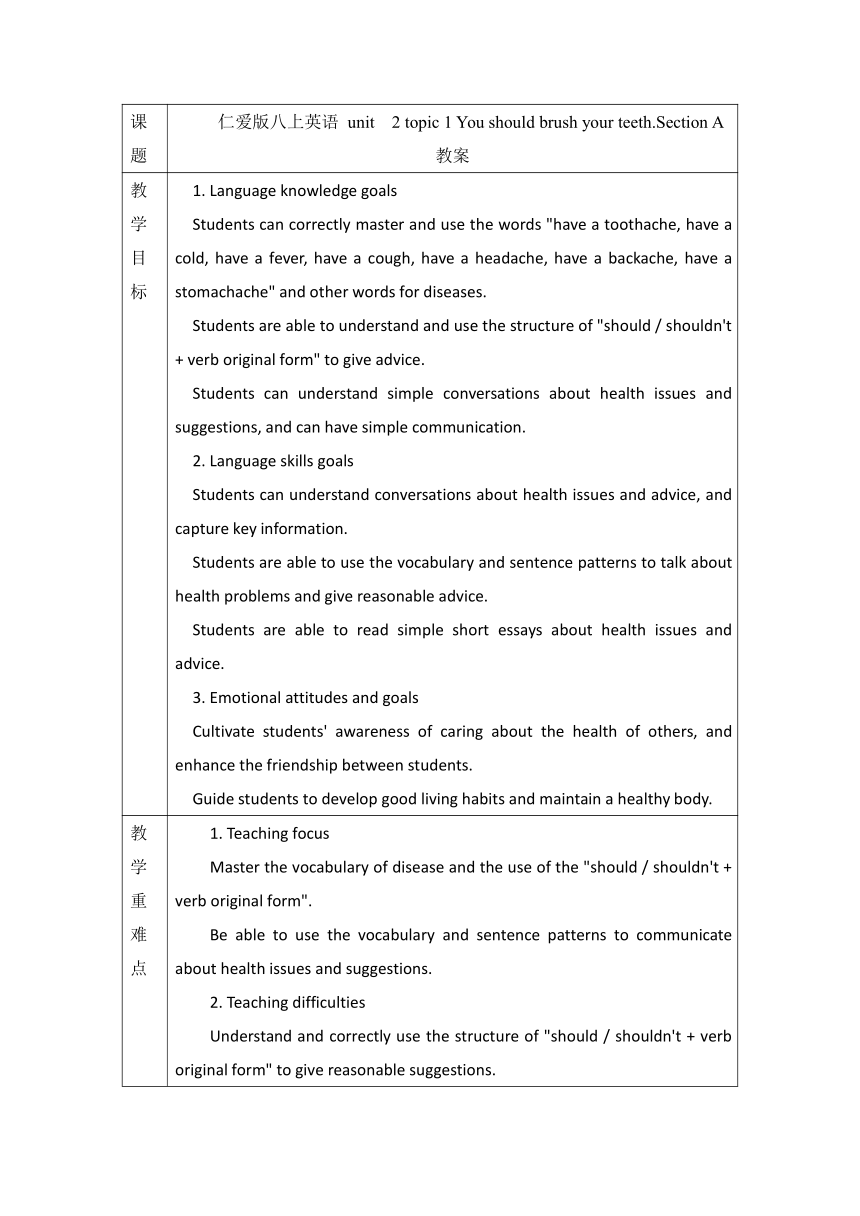
课题 仁爱版八上英语 unit 2 topic 1 You should brush your teeth.Section A 教案 教学目标 1. Language knowledge goals Students can correctly master and use the words "have a toothache, have a cold, have a fever, have a cough, have a headache, have a backache, have a stomachache" and other words for diseases. Students are able to understand and use the structure of "should / shouldn't + verb original form" to give advice. Students can understand simple conversations about health issues and suggestions, and can have simple communication. 2. Language skills goals Students can understand conversations about health issues and advice, and capture key information. Students are able to use the vocabulary and sentence patterns to talk about health problems and give reasonable advice. Students are able to read simple short essays about health issues and advice. 3. Emotional attitudes and goals Cultivate students' awareness of caring about the health of others, and enhance the friendship between students. Guide students to develop good living habits and maintain a healthy body. 教学重难点 1. Teaching focus Master the vocabulary of disease and the use of the "should / shouldn't + verb original form". Be able to use the vocabulary and sentence patterns to communicate about health issues and suggestions. 2. Teaching difficulties Understand and correctly use the structure of "should / shouldn't + verb original form" to give reasonable suggestions. Be able to flexibly use the knowledge learned in the actual situation, and accurately express their own ideas. 教学方法 1. Scenario teaching method: By creating real situations, students can learn and use language knowledge in the situation. 2. Task-based teaching method: design various tasks to let students improve their language use ability in the process of completing the tasks. 3. Cooperative learning method: organize students to study in groups to cultivate students' sense of cooperation and communication ability. 教学过程 (I) Lead in (5 minutes) 1. The teacher introduces the theme of this lesson as Keeping Healthy by showing some sick pictures or videos. (Design intention: Through intuitive pictures or videos, to attract students 'attention, stimulate students' interest in learning, and naturally lead to the theme of this lesson.) 2. The teacher asked the students, " Have you ever been ill What was wrong with you "Guide the students to recall their previous illness, and let the students express it in English. (Design intention: Through asking questions, activate the students' existing knowledge reserve, and pave the way for the subsequent learning.) (II) Presentation (10 minutes) 1. The teacher played the recording of 1 A, asked the students to listen and read the pictures from the textbook, and then answered the question: " What's wrong with Kangkang ” (Design intention: to cultivate students' listening comprehension ability and observation ability, so that students can initially understand the content of the d ... ...
~~ 您好,已阅读到文档的结尾了 ~~

